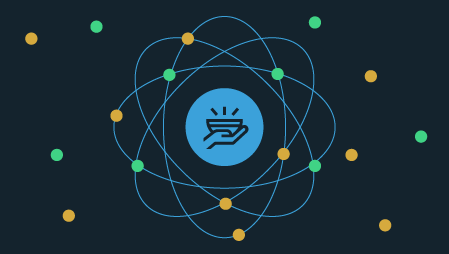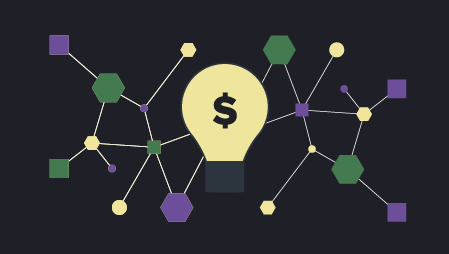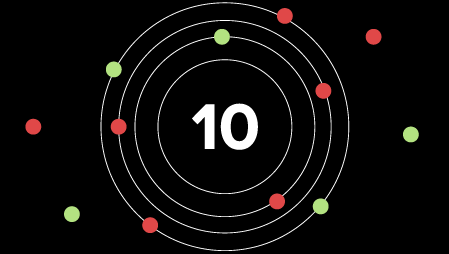The need to develop an efficient approach to understand, evaluate, and protect critical infrastructure has never been greater. An essential part of the solution lies in new and innovative techniques for modeling and simulating 5G mobile networks.
There is a sense of anticipatory euphoria on the implementation of the 5th generation of mobile connectivity. In no measure is this tech a minor upgrade; once applied, it will dwarf 4G by leaps and bounds with unprecedented levels of connectivity, ultra-reliable low latency communication, and not to mention, efficient energy usage. To give a scale, 4G download speed averages between 14 Mbps to 21 Mbps, depending on the country. But, with 5G, the speed will shoot over 10 Gbps! A huge capability joins this remarkable speed for data transmission, 10 Tbps, and a density of 1 million nodes per Km² with connection latency shrinking from 50 milliseconds to just one millisecond. To explain the scale of this speed, the human brain takes at least 50 milliseconds to send visual information from the retina to the “top” of the brain’s visual processing chain and back again in loops that confirm what the eye saw!
In other words, this allows for time reduction in communications and an increase in information transfer rate, furthermore allowing millions of devices to be connected simultaneously.
Is this the new Utopia?
According to a PwC report, the boost in productivity will add a whopping USD 1.3 trillion to the global GDP by 2030. An increase in productivity resulting from 5G technologies’ deployment will drive businesses and skilled services to new heights. The report projections show that 5G technology, used in conjunction with investments in artificial intelligence (AI) and the internet of things (IoT), can offer the potential for the rethinking of business models, quick and efficient services, and new products, with the gains accelerating as of 2025 as 5G-enabled applications become more widespread. Cloud gaming is another emerging category of applications. The combined capabilities provided by 5G networks and edge computing technologies will enable game streaming services on smartphones to compete with a quality of experience (QoE) on par with PC or console counterparts, making room for innovative, immersive games based on mobility. However, the report is quick to caution that those opportunities will also bring associated cybersecurity risks and require businesses and governments to consider new regulatory approaches focusing on the safe use of the technology.
The potential attack surface expands as 5G connects numerous devices, from IoT devices to conventional devices used in enterprises. Attacks that exploit device application and endpoint vulnerabilities, and compromised IoT-based DDoS attacks, are expected to increase. The new 5G system environments create challenges for network analysis, wired and wireless network planning, and cyber threat analysis. Beyond increased complexity, there are other considerations when operating in 5G environments. Understanding how 4G and 5G networks will function simultaneously in the same environment is crucial for organizations to ensure reliable and secure networks.
The need to develop an efficient approach to understand, evaluate, and protect critical infrastructure has never been greater. An essential part of the solution lies in new and innovative techniques for modeling and simulating 5G mobile networks.
Expanding Attack Surface
5G has a few significant privacy and security wins – it encrypts identifiers, offers security and privacy gains such as spoofing and anti-tracking features. These capabilities can provide significant benefits such as protecting users from manipulation and other online network threats. But at the same time, 5G has its own set of security challenges. It is expected to boost mobile internet growth for both individual and enterprise use, thereby creating an explosion of IoT connected devices. Because of IoT growth, the attack surface on 5G networks will be immensely greater with a highly complex ecosystem with numerous cyber-attack entry points. One of the major issues with expected IoT growth is that for some devices, primarily for the low-cost and low-powered items, security can be non-existent.
Security holes remain on 5G as devices still connect to older networks. While connected to 5G, users can still be tracked using information that remains unencrypted as it is transmitted due to a flaw in the GSMA standard. Moreover, some flaws in 5G allow for “downgrade” attacks, and threat actors could use unresolved flaws in the older networks to launch an attack.
Mobile operators will be affected by liabilities in the old GTP protocol as they embrace 5G
infrastructure. The protocol bugs enable user impersonation, user tracking, fraud attacks, and denial of service. Furthermore, spoofing attacks and mass disruption of the network are some of the protocol vulnerabilities’ results. Users will have to face the same attacks even when they shift to and from 5G networks, despite the protocol containing security features to avoid the attacks.
In conclusion
As newer capabilities are made possible with 5G, there is an imminent need to focus on devices and applications’ security. It is not just a matter of network user safety but also national security. To build 5G on top of a weak cybersecurity foundation is akin to the foolish man building his house on sand. As we race ahead in the 21st century, never has before a need arisen, where, not just individual lives, but the economy has seen so many participants, each dependent on the other.
As Fred Langa put it, “Just as drivers who share the road must also share responsibility for safety, we all now share the same global network, and thus must regard cybersecurity as a necessary social responsibility.”




